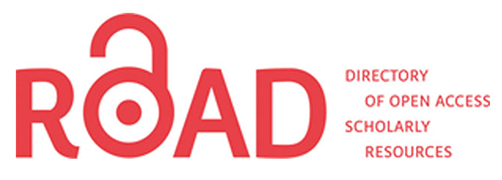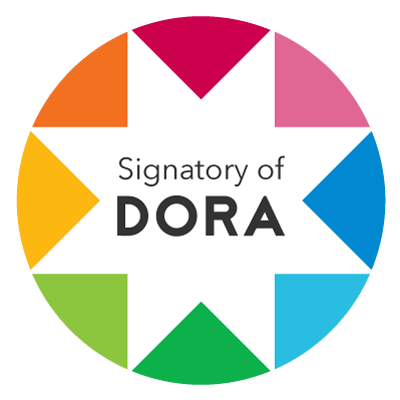Self-Managed Cultural Centres. Alternative Production and Reflection On Culture
DOI:
https://doi.org/10.24215/24691488e034Keywords:
Culture, independent, self-managementAbstract
After Cromañón Tragedy (2008), most recreational spaces on in Buenos Aires City were regulated by new laws. In this context, self-managed and independent cultural centres appeared and, in a short time, became authentic creators and resignifiers of meaning through these alternative spaces of production and reflection, not only as regards art but also in social and cultural aspects. The aim of this article is to present them, characterize them and highlight the challenges they face in the current political context.Downloads
References
Alcaraz, M. V. (2007). Centro Cultural San Martín, un clásico en evolución. Ciudad Autónoma de Buenos Aires, Argentina: Centro Cultural Gral. San Martín. Recuperado de https://www.buenosaires.gob.ar/areas/cultura/ccgsm/libro/
Anuario estadístico (2016), Estadística y Censos. Gobierno de la Ciudad Autónoma de Buenos Aires, recuperado de http://www.estadisticaciudad.gob.ar/eyc/?p=72415
Bourdieu, P. (2005). Campos de conocimiento: teoría social, educación y cultura. Chiapas, México: Universidad Autónoma de Chiapas, Facultad de Humanidades, Centro de Investigaciones Humanísticas.
Bourriaud, N. (2006). Estética relacional. Ciudad Autónoma de Buenos Aires, Argentina: Adriana Hidalgo.
Club Cultural Matienzo (s. f.). Lanzamiento de la Ley de Centros Culturales. Recuperado de http://ccmatienzo.com.ar/wp/events/lanzamiento-de-la-ley-de-centros-culturales/
Costo Tarifario (2018), Observatorio de políticas públicas de la UNDAV, recuperado de http://undav.edu.ar/general/recursos/adjuntos/22096.pdf
Cultura Unida. (s. f.). Ley de fomento a la cultura independiente. Recuperado de http://culturaunida.com.ar/
Di Santi, M. y Slipczuk, M. (18 de abril de 2018). Gas, luz y agua: cuánto subieron las tarifas con Cambiemos y cómo siguen los aumentos. Chequeado. Recuperado de https://chequeado.com/el-explicador/gas-luz-y-agua-cuanto-subieron-las-tarifas-con-cambiemos-y-como-siguenlos-aumentos/
Entrevista a Federico Velasco, artista-gestor de La Gran Jaime (2017) y a Alejandro Falcone, artista-gestor de Vuela el Pez (2018).
El Quetzal. (17 de abril de 2017). Otra clausura ilegítima [Publicación de Facebook]. Recuperado de https://www.facebook.com/ElQuetzalCasaCultural/posts/1300006390091359?__tn__=K-R
Impulso Cultural, Gobierno de la Ciudad de Buenos Aires, recuperado de https://www.buenosaires.gob.ar/cultura/impulso-cultural
Klein, N. (2007). La Doctrina del Shock. Barcelona, España: Paidós Ibérica.
Ley 5240. Ciudad Autónoma de Buenos Aires, Argentina (2014). Recuperado de http://www2.cedom.gov.ar/es/legislacion/normas/leyes/ley5240.html
Ley ECI, Ciudad Autónoma de Buenos Aires, Argentina (2019), recuperado de https://www.buenosaires.gob.ar/cultura/nueva-ley-eci
Margulis, M. (2009). Sociología de la cultura. Conceptos y problemas. Ciudad Autónoma de Buenos Aires, Argentina: Biblos.
Moreno, I. (2010). Recreación. Ciudad Autónoma de Buenos Aires, Argentina: Lumen-Humanitas.
Puig, T. (2007). Se acabó la diversión. Ideas y gestión para una cultura que crea y sostiene ciudadanía. Ciudad Autónoma de Buenos Aires, Argentina: Paidós
Vich, V. (2014). Desculturizar la Cultura. La gestión cultural como forma de acción política. Ciudad Autónoma de Buenos Aires, Argentina: Siglo Veintiuno.
Vuela el pez Centro Cultural. (31 de agosto de 2017). Comunicado oficial Vuela el Pez: otra vez sopa [Publicación de Facebook]. Recuperado de https://www.facebook.com/vuelaelpez/posts/10155108259537741?__tn__=K-R
Wortman, A. (s. f.). Espacios de circulación de nuevos artistas. Una aproximación a los centros culturales emergentes en la última década en Buenos Aires [artículo inédito]. Asociación Latinoamericana de Sociología. Recuperado de http://sociologia-alas.org/acta/2015/GT-03/Espacios%20de%20circulaci%C3%B3n%20de%20nuevos%20artistas.%20Una%20aproximaci%C3%B3n%20a%20l%20os%20centros%20%20culturales%20emergentes%20en%20la%20%C3%BAltima%20d%C3%A9cada%20en%20Buenos%20Aires%20.docx
Downloads
Published
How to Cite
Issue
Section
License
The acceptance of the manuscript by the magazine means the non-exclusive cession of the property rights of the authors in favour of the editor, who allows the reuse, after publication (post print), under a license Attribution-NonCommercial-NoDerivatives 4.0 International. According to these terms, the material can be copied and redistributed by any means or in any format as long as a) the author and original source of the publication are quoted (magazine and URL of the work), access to the license is provided and whether changes have been made is mentioned; and b) the material is not used for commercial purposes.
The cession of non-exclusive rights means that after the publication (post print) in Arte e Investigación the authors can publish their work in any language, means and format; in such cases it must be mentioned that the material was originally published in this magazine. Such cession also means the authorization of the authors for the work to be collected by SEDICI, the institutional archive of the National University of La Plata, and to be spread in the databases that the editorial team considers appropriate to increase the visibility of the publication and its authors.
Moreover, the magazine encourages the authors to deposit their productions in other institutional and thematic archives under the principle that offering the society the scientific and academic production without any restrictions contributes to a greater exchange of the global knowledge.


































